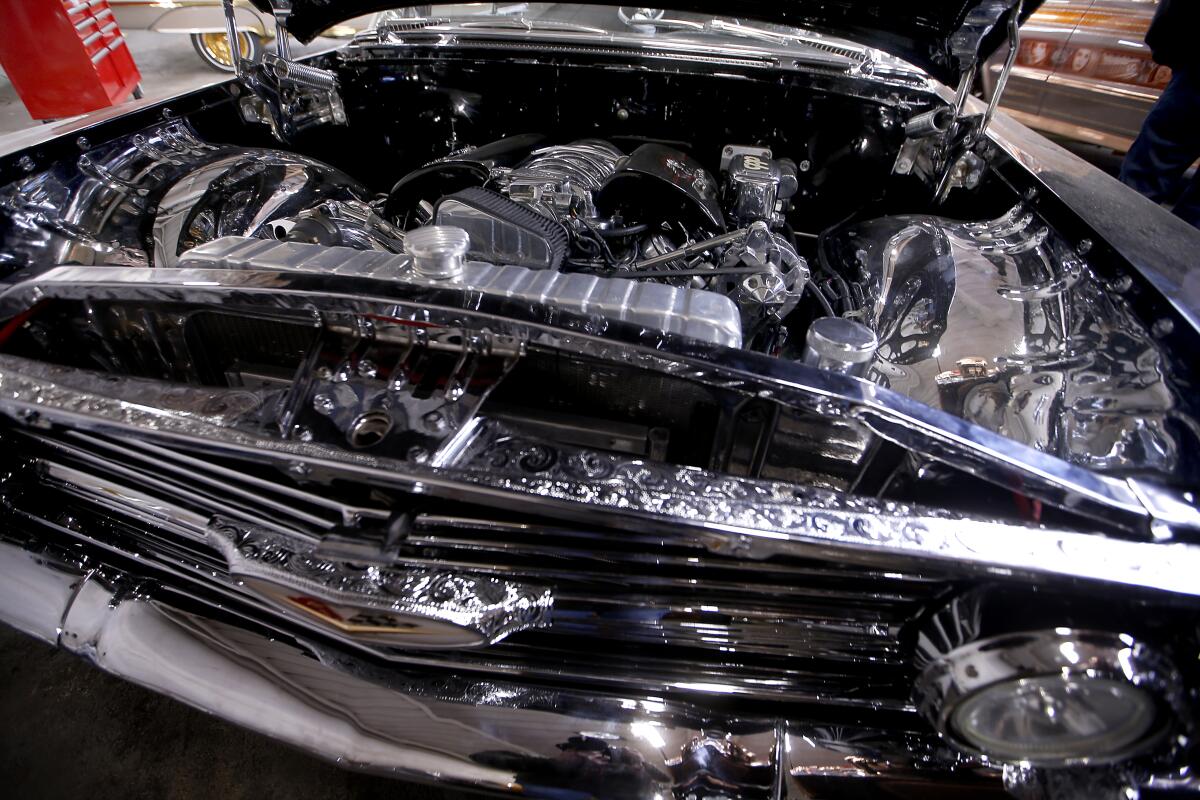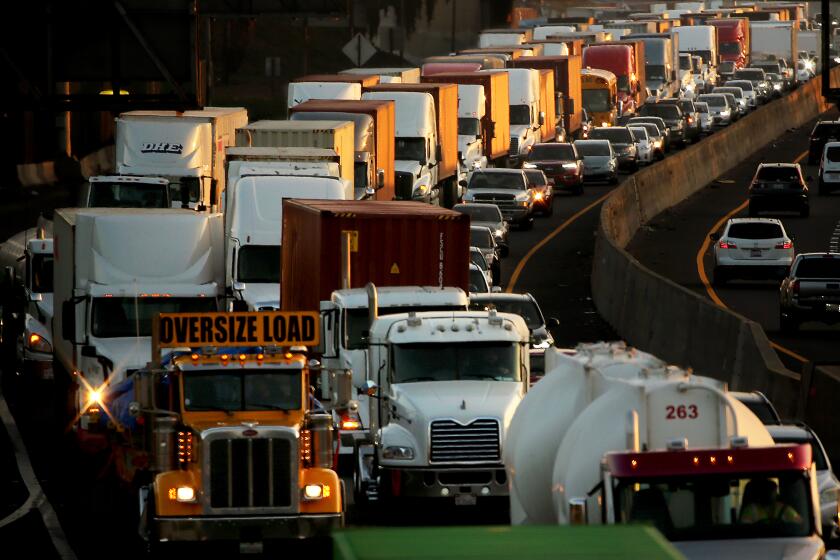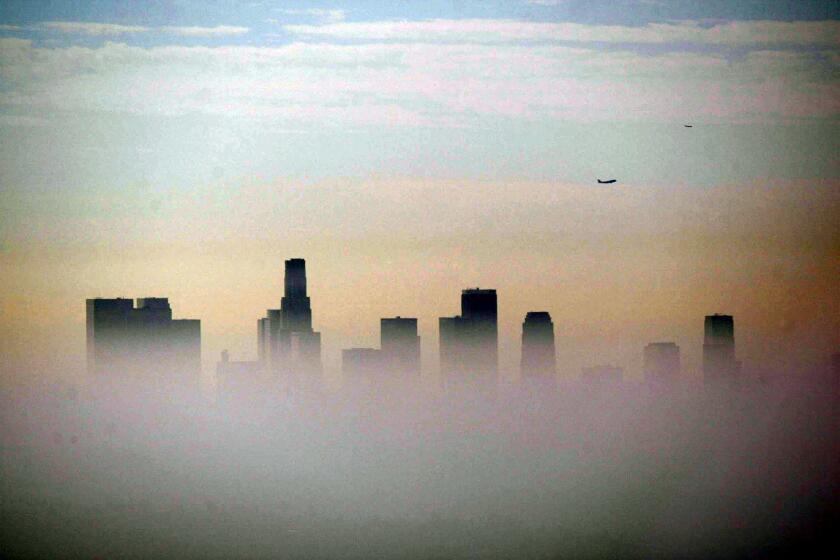California air regulators vote to ban toxic chrome plating by 2039

- Share via
California air regulators voted Thursday to ban the use of a highly toxic metal for restoring classic car parts, protecting aviation components and producing a lustrous metallic finish for a variety of consumer products.
From car bumpers to kitchen faucets, hexavalent chromium, known as chrome-6, has given a range of consumer products a gleaming decorative shine. It also provides critical aviation components like airplane landing gear with a durable, rust-resistant coating.
Although hardened chrome is harmless, the fumes from the plating process — 500 times more toxic than diesel exhaust — increase cancer risk in many disadvantaged communities across the state, according to California regulators.
To reduce the health risks associated with this exposure, the California Air Resources Board adopted a first-of-its-kind rule for the chrome-plating industry to phase out the use of chrome-6 for decorative purposes by no later than 2030 and for essential functions by 2039.
“Hexavalent chromium, in my opinion, needs to go in the dustbin with the other dangerous industrial chemicals that we as a modern society have decided we’re not going to use anymore,” said Gideon Kracov, a CARB board member. “Leaded gasoline in cars. Chlorofluorocarbons in our atmosphere. PCBs and dioxin. Volatile organic compounds in paint.”
In a marathon two-day hearing, the California Air Resources Board voted on new regulations designed to limit pollution from locomotives and cargo trucks.
The rule was lauded by clean air advocates who argued that disadvantaged communities would reap tremendous health benefits, especially in Southern California. Los Angeles County — a bastion of classic car enthusiasts and aerospace companies — has the largest concentration of chrome platers in the nation.
Industry leaders and business owners condemned the vote, calling it the death knell for metal-finishing operations in California. The vote, they said, will result in the outmigration of jobs and essential services to states with less stringent environmental standards.
“It’s going to render my business worthless,” said Art Holman, owner of Sherm’s Custom Plating, a car customization business in Sacramento. “My employees will be unemployed. Forty-three years down the drain. My entire business has worked until this [rule] passes and then my property is a hazardous waste facility.”
The metal finishing industry had tried to negotiate stricter emission controls instead of an outright ban. They argued that their facilities generated only a small fraction of the state’s total chrome-6 emissions, and that oil refining operations and cars and trucks produced far more.
However, the state argued that chrome platers significantly increased chrome-6 emissions near their operations, presenting a considerable risk to communities nearby.
In California, there are more than 110 chrome-plating facilities. About 55% of these are within 1,000 feet of homes or schools, according to CARB.
The state’s original proposal called for decorative platers to stop using chrome-6 in 2027. However, an amendment gave these operations an additional three years if they install building enclosures that would limit toxic fumes escaping from their operations.
Around 38.5 million California residents live in a county that received a failing grade in the Lung Assn.’s annual “State of the Air” report.
State officials hope the new rule will compel businesses to switch to trivalent chromium, a far less toxic alternative, which has been available as a substitute since the early 1990s. However, trivalent chromium has not been widely used in the decorative plating industry because its darker color is similar to stainless steel, an aesthetic that has not appealed to California car enthusiasts striving to mimic the high-gloss sheen of 20th century models.
For California’s aerospace industry, trivalent chromium hasn’t been proved to meet Department of Defense specifications. But the state hopes this will propel more research in the coming years.
In any case, the transition away from chrome-6 won’t be cheap.
The state estimates it will cost around $40 million for decorative platers to transition. It could cost as much as $648 million to transition the larger chrome platers that need industrial-grade coatings for such products as aircraft components.
Southern California remains synonymous with classic and customized cars of yesteryear, from hot rods to lowriders. Some CARB officials acknowledged they enjoy car culture, including board member V. Manuel Perez, who was born and raised in the Coachella Valley.
“I like lowriders …” Perez said. “I love that stuff because I grew up with that culture. But I also understand the balance here that we have to commit to.”









